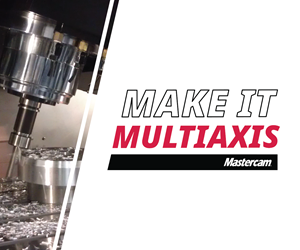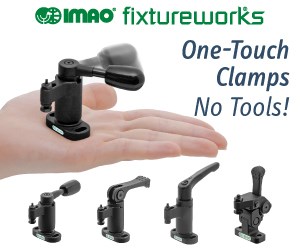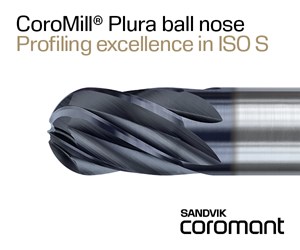Robots Armed for More Than Machine Tending
Although they’re more eager than ever to embrace robotic arms, manufacturers that don’t look beyond the machine tool risk missing out on opportunities to automate processes like deburring, cleaning and inspection.
John Lucier says he doesn’t spend nearly as much time touting the general benefits of part-handling robotic arms as he used to. “Machinists and machine tool people get it; we’re over the hump,” explains the national automation manager for machine tool distributor Methods Machine Tools Inc. (Sudbury, Massachusetts). “Recently, it’s been more about coming up with that perfect mousetrap.”
Before that work can begin, a manufacturer must understand that the proverbial better mousetrap can cover far more than just loading and unloading machine tools. To overlook processes like cleaning, marking, inspection and particularly deburring is to risk missing out on the full breadth of the opportunity afforded by robotic automation, Mr. Lucier says.
In some cases, manufacturers struggle to justify the capital expense of a robot arm that’s likely to cost more than the equipment with which it is paired—substantially more even. However intuitive this thinking is, comparing cost percentages of robot to machine isn’t a fair way to evaluate whether a downstream process is suitable for automation, Mr. Lucier says. A better comparison, he claims, is between the cost and time associated with the manual labor that a robot arm could replace. The argument essentially goes like this: If the cost of manually tending a $30,000 marking machine doesn’t substantially differ from that of tending a $100,000 machine tool, why would a robot arm be any less justified?
In other cases, manufacturers that eagerly take the first step are then slow to recognize a case in which automation begets the need for more automation. “More often than not you’ll make more parts an hour with a robot on your machine tool, but more parts an hour means more parts to deburr, too,” he explains. “It’s always ‘Look at how much we’re cutting now, this is spectacular! But now we can’t inspect them fast enough.’ I’ve seen this from companies with single robots all the way up to large customers with 30-foot rails with machines on both sides. Sometimes, it doesn’t even enter their minds that a process can be automated.”
One reason a process might be overlooked as a candidate for robotic automation is complexity, Mr. Lucier says. Loading and unloading machine tools is one thing; programming robot arms to precisely articulate workpieces around spinning deburring tools (which are subject to wear over time) is quite another. Nonetheless, deburring has become a particular focus of late, he says, citing the labor-intensive nature of a process that large portions of the market still perform manually. Tedium and repetition can lead to mistakes or even injury, he says. What’s more, the dedication, skill and attention to detail this process often requires not only can be difficult to find, but might be better applied to other value-added tasks anyway. The modular cell shown above, an example of a high-end solution from Methods, demonstrates what is possible and could represent a way forward for many high-production operations, Mr. Lucier says.
Yet, he emphasizes that, much to the surprise of some customers, such high-end systems aren’t necessary in many cases. Complexity, he explains, may well be present only in the eye of the beholder—the shop owner who hasn’t considered an alternative method that might lend itself better to robotic automation. Returning to the example of deburring, he says he might ask a customer if parts lend themselves to being pressed against an abrasive brush or belt rather than being manipulated around a cutting tool. Another option, cyrogenic deburring, is not only similarly simple to automate, but can also clean surfaces even as it freeze-blasts them smooth, he says, making it particularly useful in the medical industry. Or perhaps a task can be automated by adding stations around existing robots instead of adding new ones. An example of this might be a machine-tending arm making an extra stop for simple part measurements on an linear variable differential transformer (LVDT) sensor or air gage.
Mr. Lucier emphasizes that there are many different ways to mark a part, clean a part or perform any other downstream process, and different manufacturers have vastly different needs. Nonetheless, these processes stand to improve as much from robot-arm tending as primary metalcutting operations. With the right expertise, robotic automation can be more viable than meets the eye. And with an open mind, it might be simpler than it initially appears.
Related Content
Threading On A Lathe
The right choices in tooling and technique can optimize the thread turning process.
Read MoreSelecting a Thread Mill That Matches Your Needs
Threading tools with the flexibility to thread a broad variety of holes provide the agility many shops need to stay competitive. They may be the only solution for many difficult materials.
Read MoreTwin Spindle Design Doubles Production of Small Parts
After experiencing process stalls in the finishing stage of production, Bryan Machine Service designed an air-powered twin spindle and indexable rotating base to effectively double its production of small parts.
Read MoreBest Practices: Machining Difficult Materials
Cutting hardened steel, titanium and other difficult materials requires picking the right tools, eliminating spindle runout and relying on best practices to achieve tight part tolerances.
Read MoreRead Next
The Cut Scene: The Finer Details of Large-Format Machining
Small details and features can have an outsized impact on large parts, such as Barbco’s collapsible utility drill head.
Read More3 Mistakes That Cause CNC Programs to Fail
Despite enhancements to manufacturing technology, there are still issues today that can cause programs to fail. These failures can cause lost time, scrapped parts, damaged machines and even injured operators.
Read More







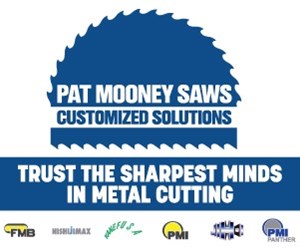
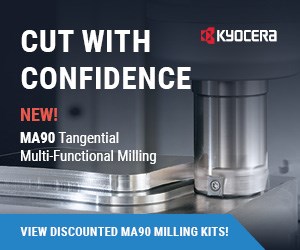

.png;maxWidth=300;quality=90)





